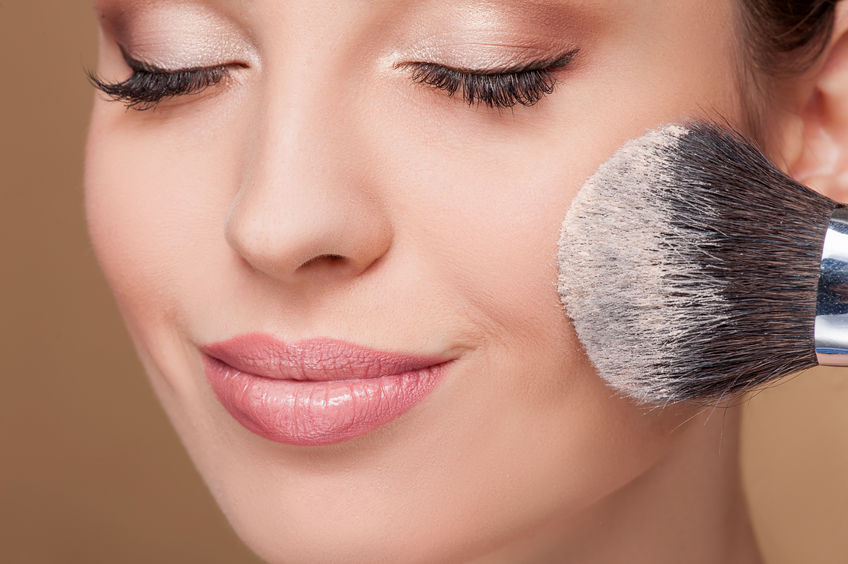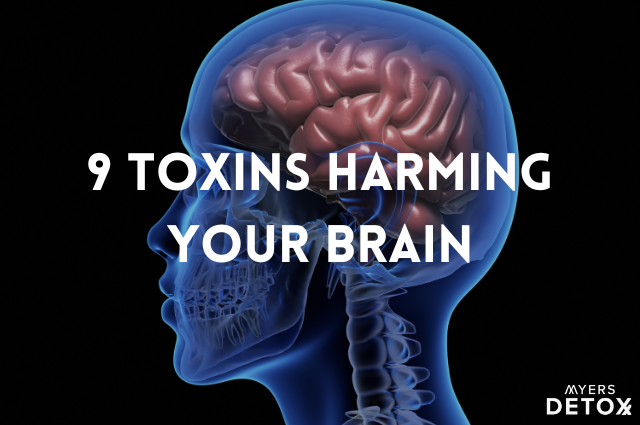Heavy metals and chemicals have been found as contaminants in a huge range of cosmetic products, including sunscreen, foundation, nail polish, whitening toothpaste, lipstick, and even foundation! Do you trust all of the products you are putting on your skin? Do you know the dangers lurking in your makeup? I’m here today to talk to you about the heavy metals in cosmetics…
I have always been obsessed with skincare and cosmetics. Like most people, I never questioned the safety of the ingredients in the things I was applying to my skin. That was until I adopted a detox lifestyle and started paying close attention to all of the things being ingested, inhaled, and absorbed into my body.
And you know what I found? Putting chemicals on your skin is far, far worse than ingesting them through food.
When you put products containing chemicals and toxic metals onto your skin, they’re absorbed straight into your bloodstream without filtration of any kind! These toxins can then bioaccumulate over time, making you sick.
Unfortunately, chemicals and heavy metals are found in most cosmetics and toiletries out there today. Many are probably in your bathroom right now…
That’s why it is so important to our health that you know exactly what is in them and how you can protect yourself from heavy metal exposure.
What Exactly are Heavy Metals and What Are the Risks Associated with Exposure?
Heavy metals are elements that occur naturally, but become concentrated and widely distributed in the environment via human activities like mining and manufacturing.
Some heavy metals, like lead, arsenic, cadmium, aluminum, and mercury may cause organ damage, hormonal imbalances and are classified as possible or known human carcinogens by the International Agency for Research on Cancer (1). The severity of their effects depend on factors like dose, route of exposure, and a person’s age at exposure.
For more info on the risks each heavy metal poses to your overall health please check out my Guide to Sources and Symptoms of Toxic Metals.
Heavy Metals in Makeup
Heavy metals aren’t something most of us would even think would be hiding in our makeup! But they are. Here are some numbers that may alarm you…
- Women use an average of 12 personal care products containing 168 ingredients daily.
- Men use about 6 personal care products containing 85 unique ingredients daily.
- Teenage girls use an average of 17 personal care products a day.
- 16 potentially toxic cosmetics chemicals (including phthalates, triclosan, parabens, metals and musks) were found in the bodies of 20 teenage girls.
In 2010, the FDA found lead in all of the 400 lipsticks tested, ranging from 0.026 ppm to 7.19 ppm with the average of 1.11 ppm (2).
In 2011, the Canadian Environmental Defense tested makeup bags of six Canadian women (49 face makeup products) for the presence of arsenic, cadmium, lead, nickel, beryllium, thallium, mercury, selenium and found that only one product had only two metals, which are nickel and beryllium (3). The rest contained two or more.
In 2013, the University of California researchers found at least one of the nine toxic heavy metals, including chromium, cadmium, aluminum, manganese, and lead in all 24 lip glosses and eight lipsticks it tested (4). Most of the tested lip products contained high concentrations of titanium and aluminum. All examined products had detectable manganese. Lead was detected in 24 products (75%), with an average concentration of 0.36 ± 0.39 ppm.
Why Are Heavy Metals in Cosmetics?
As readers of this site already know, heavy metals are a natural part of the Earth’s crust. And a result of industrial pollution, they are also present in our water, soil and air.
When it comes to cosmetics, some metals are contaminants of the chemical combining process, while others serve as colorants. Makeup dyes are derived from either petroleum or minerals, raw materials which come from the Earth’s crust and are, technically, “natural.”
Heavy metals are contaminants that tag along with both mineral and synthetic ingredients used to give products color. So even if a company is not intentionally adding heavy metals to their cosmetic products, they still may wind up in there anyway.
Additionally, several ingredients derived from plant sources that are often used in makeup – like cottonseed oils and rice derivatives – may also contain heavy metals such as lead and mercury.
There Is No “Safe” Exposure Level for Heavy Metals
Regulation of the beauty industry is almost nonexistent. In fact, here in the U.S. the federal government hasn’t passed a law to regulate ingredients in beauty products since 1937. The FDA recommends .1 ppm in candy but says 20ppm is ok in face makeup, and up to 65ppm can be used around the eyes. Most fascinating of all is that a small dose can have a big impact. 1 part per a billion is the equivalent to 1 teaspoon of food coloring in an Olympic size pool. BUT, think about this: .035 part per billion is the active ingredient in the NuvaRing, and it will stop conception!
Even if there were “safe” levels determined for these products, when you add up the exposures that most women get between multiple beauty products and the consistent use, you have a greater likelihood for toxic levels to be reached. The specific danger of heavy metals is that they bio-accumulate, meaning that every trace exposure adds up. Heavy metals get stored in the bones and stay in our bodies for decades.
The Dangers and Harmful Effects of Metals in Makeup
Lead, arsenic, cadmium, aluminum, and mercury are the metals that are of the greatest concern and they are linked to all kinds of health problems.
Let’s take a look at how you may be exposed to them through cosmetics and the harm they cause to your well-being!
Lead is linked to neurotoxicity that can cause learning, language and behavioral problems. It has also been linked to infertility, hormonal and menstrual irregularities, and delayed onset of puberty in girls and development of testes in boys (5). It is found in lipstick, lipgloss and other lip products
Arsenic is linked to non-reproductive organ toxicity and hormone disruption (6). It is commonly found in foundation
Cadmium is linked to cancer, tumors, heart, lung damage and birth defects (7). It is found in concealer and eyeliner.
Mercury (THIMEROSAL) – The FDA has banned the use of mercury compounds in all cosmetics except those used around the eyes, where levels are limited to 65 parts per million (ppm). It can accumulate in the body and may cause allergic reactions, skin irritation, or neurotoxic manifestations. Mercury is considered particularly toxic to the developing brain during pregnancy, infancy, and childhood. It is found in mascara.
A word of caution: Mercury, lead, arsenic, and cadmium, are all naturally occurring elements. So even if your products are labeled as “natural,” “organic,” or DIY, they can still harbor dangerous heavy metals inside at unsafe levels.
How to Choose Safe, Metal-Free Makeup
So we’ve talked about the dangers out there when t it comes to heavy metal exposure and your make up. There’s a lot to be aware of, for sure. But there is some good news…
You can take steps to reduce, and even eliminate, your exposure to heavy metals through your cosmetics! Here are my tips to choose makeup that is metal-free and safe for you!
- Check your products for safety – Search all of your personal care products (as well as cleaning supplies, etc.) on the Healthy Living App.
- Shop with a transparent company that is intentionally banning harmful ingredients.
- Only wear makeup with a dedicated metal testing policy – Shop safe with a brand that 3rd party tests every batch of makeup for heavy metals.
- Switch to safe starting with the basics – Replacement buying is a great way to slowly and affordably swap out your products. This means as you run out, you upgrade to a safer replacement product.
There are some reliable companies and products out there that you can use to beautify yourself and still have peace of mind that the products you are using a safe, clean, and won’t contain any harmful heavy metals.
For a full list of my fave natural beauty products and brands, please go here.
Let’s talk about one of those brands now….
Why I Love (and Wear) Beautycounter Makeup
First of all: transparency. All of the ingredients in Beautycounter makeup are listed clearly on the label. Plus, they have a “Never List” of over 1500 harmful ingredients that will never be used in any of their products.
The days of worrying about what dangerous chemicals are lurking in your beauty products are finally over!
Beautycounter also 3rd party tests each batch of makeup three times for heavy metals and their products only go to market if there are no detectable limits of toxic metals. If you want to learn more about their policy and heavy metals in their makeup, just click here.
Our skin absorbs over 64% of what is placed on it. That’s why we must take every precaution necessary to reduce the risk of contaminating our bodies with toxic ingredients, especially when it comes to makeup.
If you are looking for good, clean makeup that works, here are a few of essentials I recommend (and use myself), all from Beauty Counter! Unless you’re pregnant, start with these three:
 Foundation: It covers such a large surface area and most of us wear it daily. I feel so much better using Beauty Counter’s Tint Skin Hydrating Foundation knowing that I am not covering my face in toxic heavy metals!
Foundation: It covers such a large surface area and most of us wear it daily. I feel so much better using Beauty Counter’s Tint Skin Hydrating Foundation knowing that I am not covering my face in toxic heavy metals!- Lipstick: Nearly all lipstick contains lead, which we ultimately end up ingesting, since we lick it off our lips all day long…yikes! That’s why I switched my old lipstick for BeautyCounter’s Color Intense Lipstick. Plus it comes in so many pretty and flattering colors!
- Mascara: With such high levels of mercury around the delicate eye area, this swap is one of the most important. That’s why I wear Beauty Counter’s Volumizing Mascara.
Another reason to shop Beautycounter: Beautycounter has a great rewards program that can save you 15% as you switch to safer, cleaner makeup. Also, when you join, you get a free full-size product and are eligible for free shipping. Wahoo!
All of these perks make shopping Beautycounter ideal when you’re committed to swapping out your products over time to safeguard your health from heavy metals…plus, it will help save you a lot of money in the process!
But remember, no matter where you shop or get your makeup, make sure you do your homework and keep the heavy metals off of your face, and out of your body!









